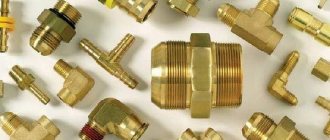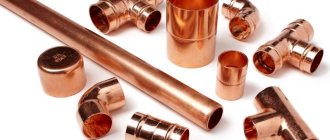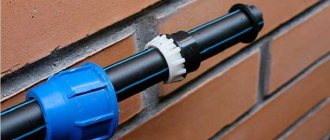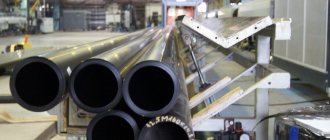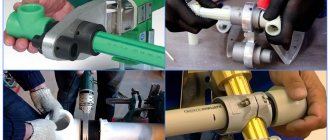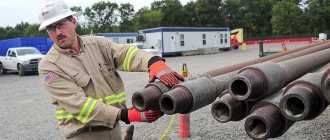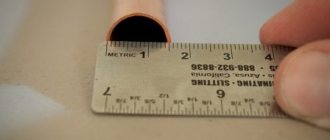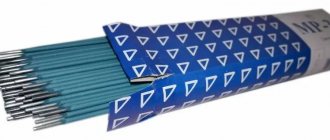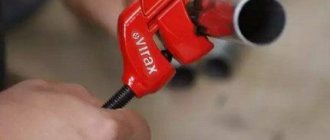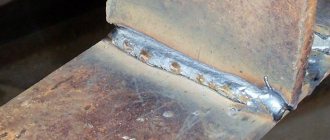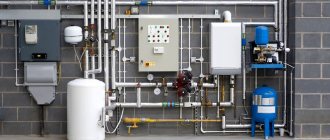Today, steel corrugated pipes are still used for the installation of pipelines of various directions. For their high-quality connection, you will need to use fittings for corrugated stainless steel pipes.
They are used as connecting elements during the installation of hot and cold water supply, heating pipelines, in water fire extinguishing structures, as well as in process pipelines.
Today you can often find an engineering system that is installed using stainless corrugated pipes, which were invented by Japanese specialists back in the 80s of the last century.
To properly design the joint of such a pipeline, it is better to use brass fittings for corrugated stainless steel pipes, which can provide quality connections for any climate zone at a relatively low price (among their analogues).
What is a fitting
Fittings are connecting parts designed to perform the following functions:
- Arrangement of a sealed transition between two pipes.
- high-quality joining of pipes of different diameters.
- Control over the flow of working fluid: dosing of supply, forced stop and change of direction.
- Possibility of extending the circuit during system operation.
- Improvement of the working system associated with a change in the shape of the gasket.
- Replacement of failed parts with steel corrugated pipes.
In any case, neither a professional installer nor a novice craftsman can do without fittings. It is with the help of these connecting elements that you can create any branches from the main circuit from a corrugated steel pipe.
Despite the wide variety of fittings, they can be divided into two types:
- Seamless elements are solid-cast fittings for corrugated pipes with a fairly high degree of reliability. To install such parts, you need specialized tools, for example, crimping pliers.
- Electric welded parts are elements consisting of several parts that are pressed with extreme precision to ensure minimal clearance.
Installation of fittings is carried out according to an easy-to-understand and fairly simple principle. This and the huge variety of connecting elements for stainless corrugated pipes make it possible to assemble any system with your own hands. And adherence to installation technology allows you to obtain strong and durable connections.
For high-quality assembly of a system of corrugated stainless steel pipes, it is necessary to draw up a project plan. Thanks to this document, the correct layout of elements is carried out. When drawing up a project, it is important to remember that different types of elements are used for different communication systems. In addition, before installation, you need to carefully inspect fittings for corrugated stainless steel pipes. It is not allowed to use elements with chips and defects from mechanical impact. The absence or incorrect installation of a sealing gasket can lead to leakage and subsequent failure of the entire system.
Unfortunately, for those who produce stainless corrugated pipes, it is not profitable to produce fittings for their products. For the purpose of economic benefit, large manufacturers do not set themselves such a task. However, the demand for stainless steel pipes and fittings is constantly growing, which allows fitting companies to receive a stable income.
The production of fittings for corrugated pipes made of stainless steel is established in many countries. Elements supplied from Europe receive a good recommendation. Russian enterprises are not only increasing their output, but at the same time tightening control over product quality.
General information about corrugated steel products
Today, high demands are placed not only on the quality of building construction, but also on the provision of appropriate communications.
Corrugated stainless steel pipe has proven itself well and is in demand among buyers in the construction market.
Such products are often used not only for laying a new system, but also for replacing worn sections of pipes in old premises during repair and restoration work.
They are often used due to their high quality and durable operation. Its advantages also include:
- resistance to water hammer;
- easy flexibility;
- resistance to low temperatures (freezing);
- does not corrode and does not retain any deposits of dirt or lime deposits on its walls;
- environmentally friendly and does not require cleaning procedures during the installation of pipelines for food liquids;
- does not require constant checking for possible breaks and leaks;
- couplings can withstand internal pressure of the system up to 60 atmospheres, and the pipe up to 200 atmospheres;
- installation does not involve the use of complex plumbing tools.
Steel fittings
Metal fittings are the most common and easy-to-install elements, made of stainless steel with a chromium content of up to 20%. Steel fittings are used for installation on metal pipes.
Steel or brass connecting elements have a number of advantageous characteristics:
- No oxidation occurs when exposed to moisture. Even long-term use does not cause traces of corrosion. The surface inside the element is always clean.
- Resistance to mechanical stress and water hammer.
- Possibility of use in a wide temperature range, including work at negative air temperatures.
You can connect stainless steel corrugated pipes and pipes made of other materials using brass fittings.
When installing brass connection elements, it is necessary to use crimp rings or threaded connections. In addition, to install such parts, you should ensure that you have special crimping pliers or a set of tightening wrenches.
Crimping elements are in no way inferior to steel parts in terms of reliability. The most common are copper and brass fittings for stainless steel pipes, presented by well-known companies producing heating equipment.
Working with cheap parts of low quality leads to a reduction in the operational period of the entire system, and also contributes to the creation of an emergency situation. A similar result can be obtained if the connecting elements are selected incorrectly. It is in this area that a working fluid leak may form.
Types of stainless steel connecting fittings
Stainless steel fittings are divided into the following types of manufacture:
- electric welded, containing several parts;
- seamless - produced in factories by casting and sold whole.
In addition, welded and threaded connecting elements containing stainless steel are divided according to the type of application into:
- adapters that help make connections with sections of different sizes;
- bends that help change the direction of internal flow;
- tees are used to branch communications.
Steel fittings are the ideal connecting element for corrugated products, they connect them to fittings and other equipment without problems.
It is important that the connecting metal elements are hygienic, they are easy to clean and are not afraid of any disinfectants, therefore they are often used in water supply systems of schools, children's educational institutions, hospitals, etc.
Video 2.
Tiemme self-clamping fitting
They can change the movement of liquid or steam flow in a water supply system and, if necessary, form several branches from the main pipe.
Steel fittings for corrugated products made using stainless steel, which are found in our construction markets, can withstand a wide temperature range from -30 to +230 degrees at pressures up to 16 bar.
The undeniable advantages of these stainless steel connecting elements include:
- versatility and aesthetic appearance of the product. Thanks to these characteristics, these details have been used in the interior design of the most famous architects for many years;
- safety and reliability with complete environmental friendliness;
- durability, since stainless steel has a longer service life than other metals that are susceptible to corrosion, which ultimately significantly reduces their service life;
- the alloy is characterized by high strength and resistance to mechanical damage;
- they do not have narrowed sections, so they do not slow down the movement of the transported liquid or gas.
Plastic parts
Connectors made of this material are used to connect pipes of combined systems, as well as for insertion into a centralized water supply system. With the help of such elements, the joining of pipes made of polypropylene and stainless steel is simplified.
The main criterion for choosing fittings is resistance to corrosion and sudden changes in pressure. The correct solution of connecting parts allows you to install the most complex system.
When installing plastic fittings, the degree of tightening of the nuts should be monitored to prevent the elements from breaking.
Installation of fittings
To work with stainless steel pipes, in addition to fittings, you will need a set of tools:
- pipe cutter - without it it is difficult to evenly cut a corrugated pipe, and the reliability of the future assembly depends on the accuracy of the cut;
- installation tool corresponding to the type of connection of the fitting: welding machine for welded shaped elements, a tightening or regular adjustable wrench for crimping, press pliers for crimping;
- knife - it is necessary if the pipes are covered with a protective film.
Having prepared the necessary tools, perform the work in the following order:
- The necessary measurements are taken and the corrugated pipes are cut into pieces of the required length with a small margin.
- Clean and polish the cut. If there is a protective film, cut it 1-2 cm from the edge.
- Clean and degrease the fitting and its auxiliary parts.
- If a welded fitting is used, install it flush with the end of the pipe, fix and solder it, making sure that there are no distortions. This completes the execution of the unit; all that remains is to connect the elements of the pipe network in the same way to the remaining branch pipes of the fitting.
- When using crimp and press fittings, you must first remove the fixing elements: the crimp nut or press ring.
- A nut or ring is placed on the end of the pipe and moved along the pipe from the edge a few centimeters.
- If the corrugation does not have its own retaining ring, insert such a ring into the end of the pipe so that its cut rests against the stopper.
- Remove the sealing ring gasket from the fitting and put it on the pipe so that the edges of the retaining ring and spacer ring coincide.
- Install the fitting body close to the cut of the corrugated hose and move the fixing element towards the body.
- Complete the fixation. If using a compression fitting, tighten the compression nut until it contacts the body. If a press fitting is used, press the ring using press pliers.
We recommend that you read: Fittings for installing a heating system
Some manufacturers produce crimp and press fittings in kits that do not require disassembly - this is usually indicated in the product instructions. For such shaped elements, it is enough to loosen the nut by unscrewing it ⅔ of the length of the threaded pipe, or move the press ring the same distance from the body. Then a section of pipe is inserted into the undisassembled fitting until it stops, after which the fixing part is returned to its place where it is crimped or crimped.
Types of elements for connecting stainless steel pipes
The following types of fittings are used for joining corrugated stainless steel pipes:
- Couplings are designed to connect straight pipe sections.
- Rotary angles are necessary to change the geometry of the pipeline. Despite the flexibility of corrugated pipe, there is a certain limit. The bending radius of corrugated pipes must be less than their double diameter.
- Branch tees for corrugated pipes are necessary to change the direction of part of the flow from the main pipeline.
- Crosses make it possible to branch the main flow of working fluid and send it in different directions.
- Technological plugs are designed to completely shut off a pipeline or a certain part of it for the period of repair or improvement.
- Transition connectors are used to splice pipes of different diameters.
How to troubleshoot possible problems
Even if the assembly of the pipe network was carried out by a master with many years of experience in such work, upon completion of installation or during operation, leaks may occur in the connection nodes.
If a leak is detected in the connection area of the corrugated hose, do the following:
- Shut off the supply of the working medium and bleed its remains from the pipeline (if water flows through the pipes, drain it, if natural gas, light one of the burners of the stove).
- Dry and clean the outer surface of the unit.
- If the pipe is connected by welding, solder the detected hole. If it is crimping, cut off and replace the fitting. If the pipe is connected using a compression fitting, tighten the nut.
- Turn on the supply of working medium.
- If the leak resumes, then repeat all previous operations for the welded joint; for the crimp joint, turn off the supply of the working medium, bleed off its remains, disassemble the assembly and proceed to the next step.
- Check the condition of the assembly elements under the nut. If the edge of the corrugated pipe has burrs or other damage, it is necessary to cut off the damaged section. If the retaining ring or sealing ring is damaged or missing, install the whole part.
- Reassemble the unit, turn on the supply of working medium.
- If it was not possible to get rid of the leak, the fitting's thread may have been stripped, in which case it will have to be completely replaced.
List of tools and equipment for system assembly
Special tools with which you can cut the pipe and secure the fittings allow you to perform high-quality installation of any system.
Each master working with corrugated stainless steel pipes must have a minimum set that includes the following tools:
- A pipe cutter is a pair of scissors that can be used to make an even cut of a pipe while maintaining its shape.
- Tools to help press fittings.
- A set of tightening wrenches for pipes of different diameters and crimping pliers.
- A tool used to flare the ends of a corrugated pipe.
Highly qualified craftsmen have in their arsenal a welding machine to make connections that are necessary when it is impossible to use compression fittings.
If you can assemble a water supply and heating system with your own hands, then their repair and maintenance should be carried out by a qualified specialist. It will be better if the installation of the heated floor system is also carried out by an experienced technician. A person who is far from installation work can make an irreparable mistake.
As a result, leaks and depressurization of the system may occur. Also, a professional installation engineer must be present during the installation of gas supply systems made using corrugated stainless pipes.
Varieties
A feature of stainless steel pipe products is their compatibility with most materials, which is why fittings from different materials are used to assemble a pipeline using corrugated stainless steel pipes. In addition to the material of manufacture, fittings are classified according to the shape of the body, which is directly related to the functionality of the mounting element.
According to the material of manufacture
For installation of stainless steel corrugation, fittings made from the following materials are used:
- Stainless steel. Connecting pipes with fittings made of the same material is the best possible installation option. The parts of the formed assembly in this case have the same thermal expansion, the same mechanical and hydraulic strength. In addition, stainless steel elements can be connected to each other not only by crimping or crimping, but also by welding. However, due to the flexibility of corrugated pipe, the welded assembly can fail, and crimp and press fittings are prone to sticking, especially on pipelines transporting hot or chemically aggressive media.
- Brass. Brass fittings are mainly used to connect steel and plastic pipes, making a crimp or crimp connection. Brass is not inferior to steel in strength and durability, but at the joints it does not stick to steel pipes.
- Plastic . Polymer mounting elements are also used when assembling pipelines from steel and plastic pipes. Polymer fittings do not react with the external environment and transported substances, therefore, unlike metal alloys, they are absolutely not susceptible to corrosion and do not decompose. However, the temperature and mechanical strength of these fittings is lower, they are not resistant to ultraviolet radiation and some solvents, in addition, the plastic thread is easier to break during installation.
We recommend that you read: Fitting: what it is, types and types
By functional features
Based on the functions performed and, accordingly, the shape of the body, the following types of shaped fittings for corrugated stainless steel pipes are distinguished:
| Name | Functions | Case shape |
| coupling | direct connection of two identical pipes | straight cylinder |
| Gearbox | direct connection of pipes with different sections | truncated cone or two connected cylinders |
| Retraction | connection of two pipes at right angles | right angle curved |
| Tee | connection to the main line of an additional branch | straight with side branch |
| Cross | connecting two or more additional branches to the main line | straight with several side branches |
| Stub | closing an unused pipe | half-body, hermetically sealed on one side |
Note! The use of 90-degree bends for installing corrugated pipes is due to the fact that corrugated pipes can be bent within a range of up to 90 degrees without fittings. A right angle connection is usually required when connecting consuming devices to the pipeline.
